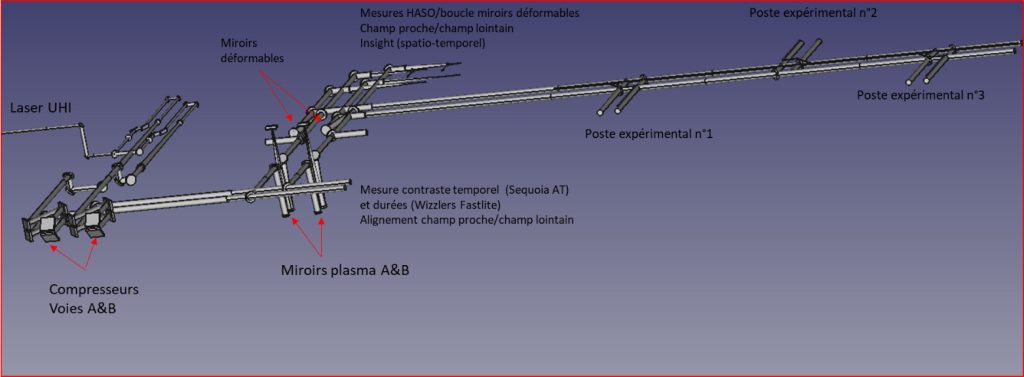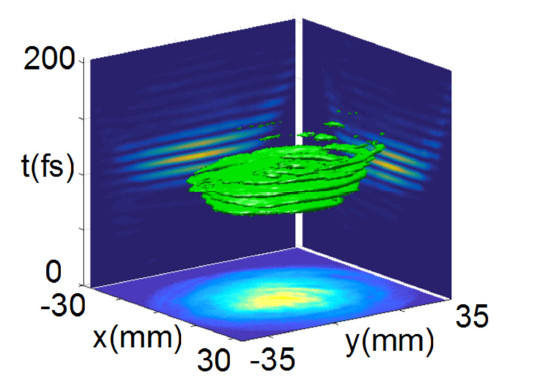
Spatial, temporal and spatio-temporal diagnostics available on UHI 100
Since UHI physics requires the use of very high illumination levels, which may be shaped in the spatial, temporal or spatio-temporal domain, major efforts have been made over the years to provide diagnostics (commercial or developed in-house or in collaboration with other laboratories or start-ups (Fastlite, SourceLab, Amplitude Technologies, etc.)).
Some of these diagnostics have been integrated into feedback loops, to optimize illumination or perform beam shaping, whether in the spatial (deformable mirror wavefront meter), temporal (Dazzler spectral amplitude and phase measurement) or spatio-temporal domain.
Read more
1 – In the space domain, two types of wavefront meters are used on the platform: Shack-Hartmann type systems(Imagine Optic) and a system based on quadrilateral interferometry(publication 1, publication 2). The former are two in number, each linked to a deformable mirror and used in feedback loops to minimize laser geometric aberrations.
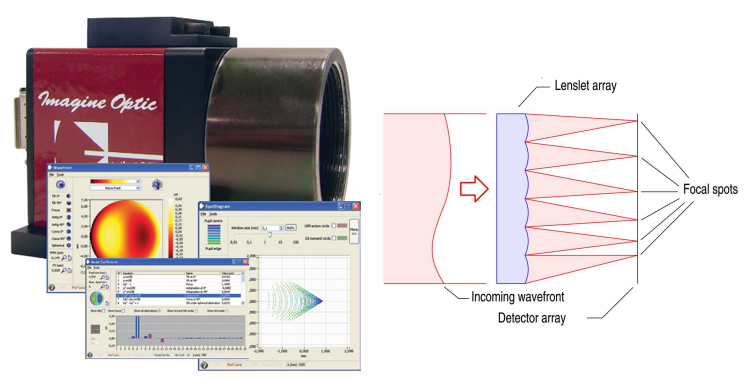
Wavefront sensor (HASO – Imagine Optics)
Principle of wavefront measurement
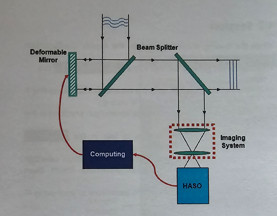
Principle of wavefront correction

Deformable mirror principle
2 – Time characterization has been an important area of activity for the laboratory, with collaborations (with LOA and Fastlite in particular) on systems based on spectral shift interferometry(SPIDER) and self-referencing spectral interferometry(SRSI/Wizzler). The first feedback loop (SPIDER/Dazzler) for correcting or shaping spectral amplitude and phase was produced in 2003(CEA/Fastlite). We currently use Wizzler and SPIDER systems to characterize the UHI100 laser.
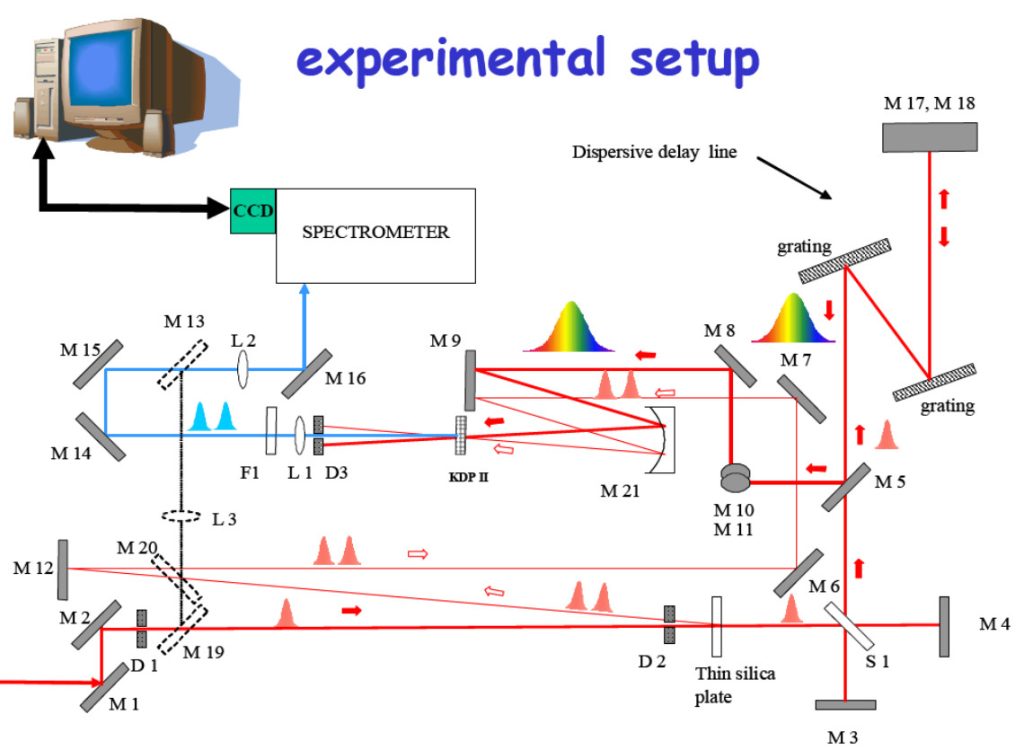
Schematic diagram of a SPIDER
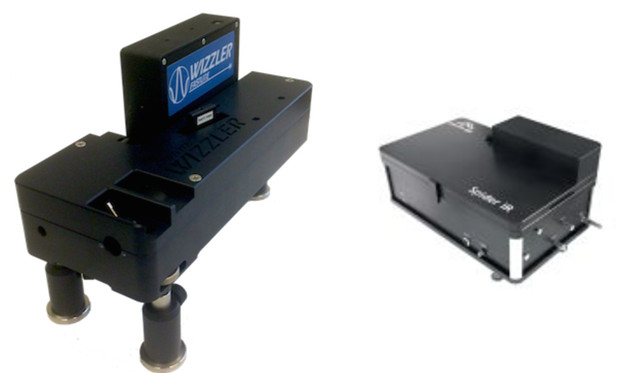
We also have a system for measuring the temporal contrast of our laser pulses, an essential parameter for high-intensity experiments on solid targets. We use a SEQUOIA, marketed by Amplitude and licensed by CEA (developed through a collaboration within our laboratory over 20 years ago). The principle is simple: we measure the cross-correlation function between a Dirac-type pulse (SHG of the pulse to be characterized) and the pulse to be characterized. An example of a measurement performed on channel B of the UHI laser is shown below:
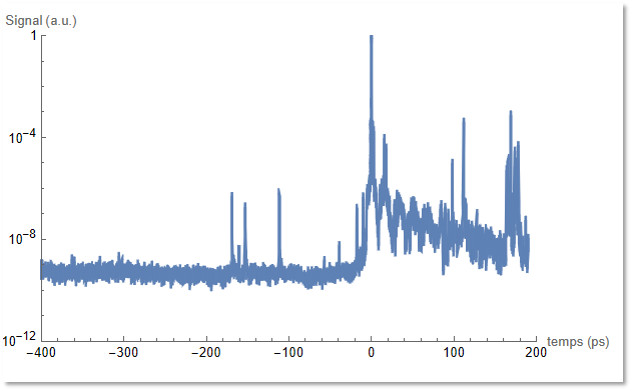

3 – Characterization and space-time shaping was the next step in R&D on the UHI100 platform. The two methods developed in the laboratory (TERMITES, INSIGHT), based on spatially resolved Fourier interferometry, enable the electric field to be fully determined (from several measurements). These studies have given rise to patents(CEA/AT, CEA/SourceLab). The Insight method has given rise to a family of products marketed by SourceLab. The latest system developed (CEA/SL) for very-high-intensity, low-repetition-rate lasers is based on the use of a polarization interferometer and signal processing (sub-sampling). It enables measurements to be taken with a much reduced number of measurement points compared with a standard system.
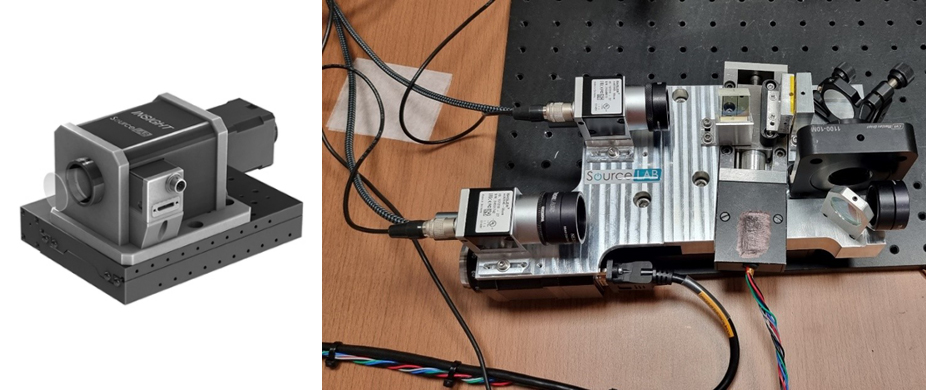
Insight Standard model
Insight “Few Shots” model
4 – The overall positioning of the various diagnostics is shown in the figure below:
